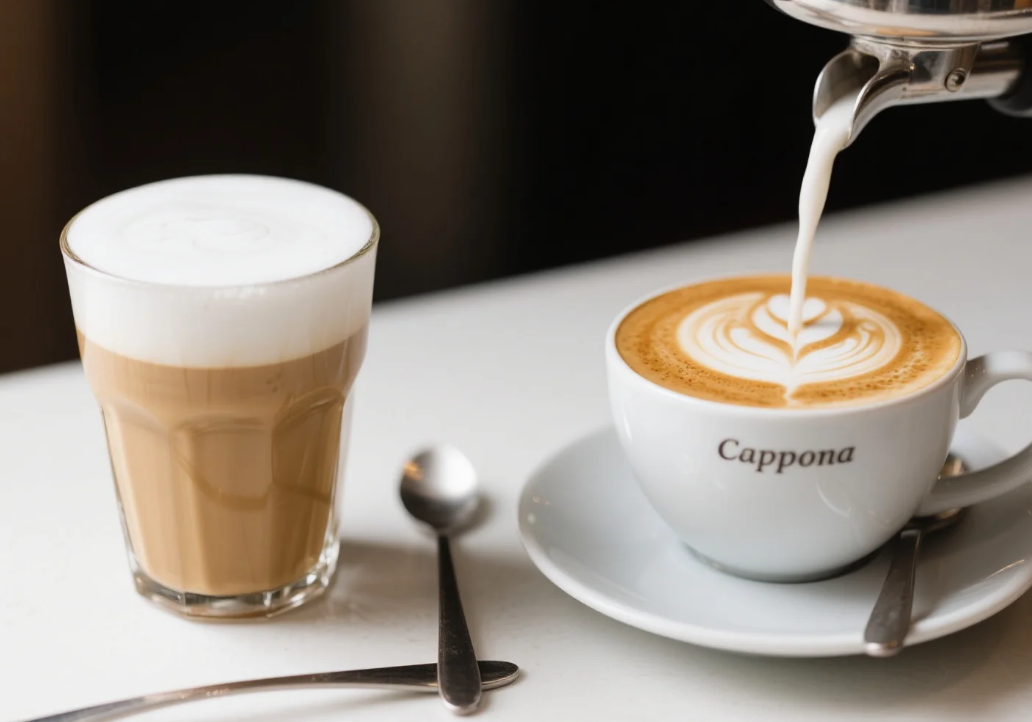When it comes to espresso-based drinks, latte and cappuccino reign supreme, gracing coffee shop menus worldwide with their distinct charm. These beloved beverages captivate with their rich flavors and textures, but what truly sets them apart? As a leading coffee packaging machine manufacturer, HIJPACK Machine at https://www.hijcoffeepack.com/ equips coffee businesses with coffee packaging machines to deliver fresh, high-quality products that complement these classic drinks. This article dives into the nuances of latte vs. cappuccino, exploring their ingredients, preparation, and unique appeal, while highlighting how HIJPACK Machine’s coffee stick pack packaging machines support coffee brands in delivering exceptional products.
At their heart, both latte and cappuccino share three fundamental components: espresso, steamed milk, and milk foam. However, the magic lies in their ratios and preparation techniques, which create distinct experiences for coffee lovers.
Espresso is the soul of both drinks, delivering a concentrated burst of flavor. Brewed by forcing hot water through finely ground coffee under high pressure, espresso offers a bold, aromatic base. The choice of beans—whether single-origin or blended—and roast profile (light, medium, or dark) shapes the drink’s character. HIJPACK Machine’s coffee bean packaging machine ensures coffee stays fresh with nitrogen flushing and degassing valves, preserving the espresso’s rich taste for baristas crafting these drinks.
Steamed milk adds creaminess, balancing espresso’s intensity. Heated to 125°F–150°F using a steam wand, milk’s proteins denature to create a silky texture. In a latte, steamed milk dominates, making up the bulk of the drink for a smooth, comforting sip. A cappuccino, by contrast, uses less milk, emphasizing balance with other components. HIJPACK Machine’s coffee packaging equipment supports brands using high-barrier films to protect milk-based coffee mixes, ensuring freshness for instant latte or cappuccino products.
Milk foam is where science meets art. Created by injecting steam into milk, foam forms as proteins like casein stabilize air bubbles, yielding a light, velvety layer. Cappuccinos feature a thick foam cap, often equal in volume to milk and espresso, giving them a frothy texture. Lattes have minimal foam, prioritizing a creamy mouthfeel and a canvas for latte art. Plant-based milks, such as soy or oat, are increasingly popular, and HIJPACK Machine’s coffee stick packaging machine packages instant coffee mixes compatible with these alternatives, catering to diverse consumer preferences.

The key difference between a latte and a cappuccino lies in their ingredient ratios:
Latte: Typically, a latte consists of one or two shots of espresso (1–2 oz), 6–8 oz of steamed milk, and a thin layer of foam (0.5–1 oz). This milk-heavy composition creates a milder, creamier drink, ideal for those who enjoy a balanced, less intense coffee experience.
Cappuccino: A standard cappuccino features equal parts espresso, steamed milk, and foam (about 2 oz each in a 6 oz drink). The higher foam ratio delivers a robust, airy texture, with espresso’s boldness shining through. Variations include dry cappuccinos (mostly foam) and wet cappuccinos (more milk, closer to a latte).
These ratios influence not only taste but also presentation, with lattes offering a smooth surface for art and cappuccinos showcasing a frothy crown.
Creating a latte is a blend of precision and creativity. Here’s how to make one using a standard espresso machine, with tips to ensure quality:
Heat milk to 125°F–150°F using the steam wand, creating a small amount of microfoam. Avoid overheating, as lactose sugars can scald above 155°F, affecting flavor.
Generate a thin layer of foam by keeping the steam wand near the milk’s surface. The goal is minimal foam for a creamy latte texture.
Grind coffee beans to a fine espresso consistency just before brewing to maximize flavor. HIJPACK Machine’s coffee packaging machines preserve bean freshness, ensuring optimal espresso quality.
Pull a 1–2 oz shot of espresso using water at 186.8°F–203°F. A double shot adds depth, balancing the milk’s volume.
Gently pour steamed milk over the espresso, holding back most of the foam to maintain a smooth texture. The milk melds with the espresso, creating a uniform color.
Spoon or pour a thin layer of foam on top. For latte art, pour slowly to form patterns like hearts or rosettas, enhancing visual appeal.

A cappuccino demands precision to achieve its signature balance. Follow these steps for a classic 6 oz. cappuccino:
Steam milk to 140°F–150°F, ensuring a higher fat content (e.g., 3.4% milk, per Italian standards) for robust foam. Whole milk is traditional, but barista-grade oat milk works well for plant-based options.
Froth vigorously to produce thick microfoam, aiming for double the milk’s initial volume. This foam is the cappuccino’s defining feature.
Grind beans finely for espresso, capturing the roast’s nuances. Medium roasts often enhance cappuccino’s balance.
Brew a 2 oz espresso shot, ensuring a consistent extraction for bold flavor.
Add 2 oz of steamed milk to the espresso, adjusting for a wet or dry style. Less milk yields a drier cappuccino.
Spoon 2 oz of foam onto the center, spreading it to form a dark espresso ring. Add optional dustings like cocoa or nutmeg for flair.
In Italy, ordering a “latte” gets you a glass of milk—always specify caffe latte for the espresso drink. Cappuccino, named for the “little hood” of Capuchin monks’ cloaks, reflects its foam cap. These cultural roots highlight the drinks’ heritage, adding storytelling value for brands. HIJPACK Machine’s coffee stick pack packaging machines enable coffee companies to package instant versions of these drinks, complete with clear labeling for origin and roast details, enhancing consumer connection.
Lattes appeal to those seeking a creamy, customizable drink, often enjoyed throughout the day. Cappuccinos, with their bold espresso and frothy texture, are traditionally a morning staple in Italy. HIJPACK Machine’s coffee packaging equipment for sale supports single-serve stick packs, perfect for on-the-go lattes or cappuccinos, meeting modern consumer demands for convenience.
Located at No. 1455, Songpu East Road, Dachitou, Nanbin Street, Ruian City, Wenzhou City, Zhejiang Province, China, HIJPACK Machine is a trusted coffee packaging machine manufacturer. Our coffee packaging machines ensure coffee freshness and quality, supporting baristas and brands in delivering exceptional latte and cappuccino experiences. Benefits include:
Precision Packaging: Coffee stick pack packaging machines produce single-serve packs (16mm–50mm wide, 45mm–170mm long) with accurate dosing.
Freshness Protection: Nitrogen flushing and degassing valves in our coffee bean packaging machine preserve espresso quality.
Versatility: Handle instant coffee, ground beans, or 3-in-1 mixes with our coffee packaging equipment.
Global Support: Contact us at helen.machine@gmail.com or +86 13868822120 for tailored solutions and after-sales service.